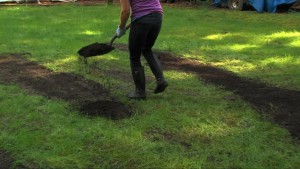Spring is here and the season of yard work has begun. If you have let your lawn go to the birds over the winter, it is time to start focusing in on these top ten lawn eye-sores and get proactive about having an enviable yard.
1. Debris
If you’re like most people you probably raked up all those dead leaves once or twice and then let the rest lie once the snow started falling. In the spring, all of those leaves, branches, and other debris need to be dealt with. A strong mower with mulching power will help break things up and help with the cleanup process.
2. Cutting Things Too Short
Before you start mowing this season, make sure you go over the engine’s components and fill it with fresh oil and gas. Get any repairs or replacement parts now to ensure your mower is running efficiently. Now that you’ve got your mower ready to go, check that you are setting the blades high enough. Cutting more than the top third of the grass will damage your lawn and make it susceptible to heat and bugs.
3. Bad Edging
Even a perfectly mowed lawn can look sloppy without manicured edges. A power edger will help you get crisp, clean lines along walkways and driveways without spill over from the lawn. You can also use string trimmers to edge with a bit of practice.
4. Brown Spots
Brown spots in the lawn can be tough to combat. One of the best ways to fight them is to jump on aeration and fertilization earlier in the spring to build a stronger root system and give your lawn more moisture. Self-propelled aerators can cut this task down to just a few minutes, and make it easy for you to keep up with throughout the year.
5. Tall Weeds
If you have many trees, rocks or other obstacles in your yard, you probably have areas where grass and weeds grow taller than everything else as they are hard to reach with a regular mower. A lightweight weed eater will help trim those areas down to size and keep things looking uniform.
6. Dandelions and Wild Grass
Crabgrass and dandelions can take over a yard in no time if it goes unchecked. There are many commercially available weed treatments that stop unwanted weeds from killing off your healthy grass.
7. Dead Spots in Shade
If your yard has many shady areas that don’t get regular sunlight, your grass will suffer from balding dirt patches. You can either choose a more shade friendly mix of grass seed to fill it in, or you can turn the area into a flower patch with mulch to fill in empty spaces. Either way, you will probably need to till the area with a rototiller before you replant.
8. Overgrown Bushes and Trees
No matter how nice your lawn is, things will always seem a little off if you have bushes and trees that have run amok. A hedge trimmer can be your best friend when it’s time to shape things up and clip out dead sections of bushes.
9. Poor Planning
If you are trying to give your lawn an elegant look with a few shrubs, trees or other plants as accents, plan carefully. Know how big those plants will grow, what conditions they thrive in, and how closely they can be planted to one another. Failure to plan accordingly will mean that your plants will grow poorly or perhaps strangle one another in an attempt to get the nutrients they need, leaving you with more awkward patches.
10. Unsightly Utilities
Utility boxes, poles and air conditioners can be an eyesore that affects the curb appeal of your home. Take a step back and consider how you can block those things from view with layered planters. Of course, make sure you are ready to handle tilling and laying down barriers in the area to get your planter started right.
Want more tips for keeping your lawn green?
For more information about how to maintain your outdoor power equipment for all of your lawn care projects, visit hondalawnparts.com today. They have all of the parts you need to keep your mowers, trimmers and other machines running right this spring and summer.

